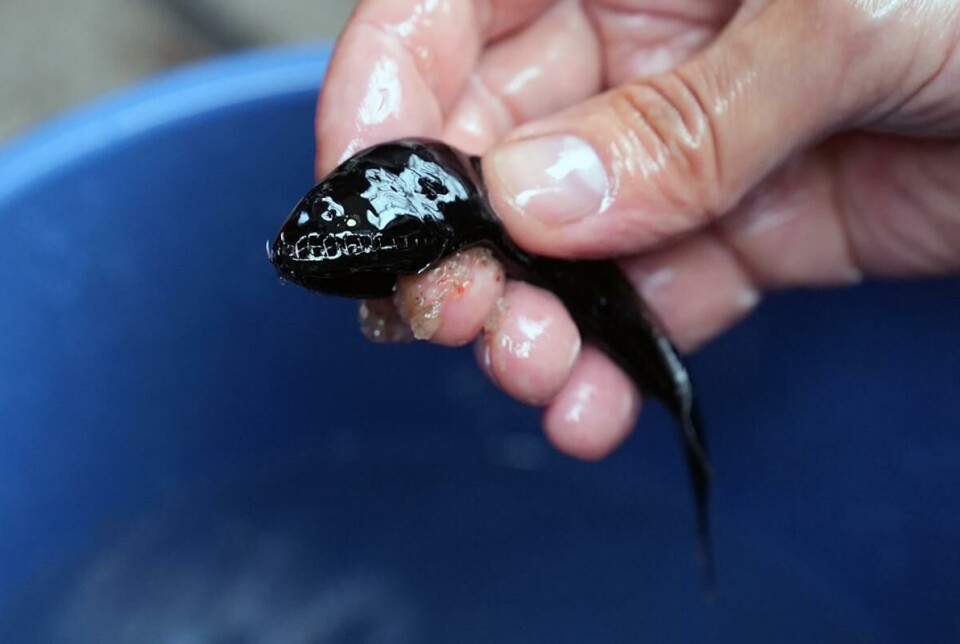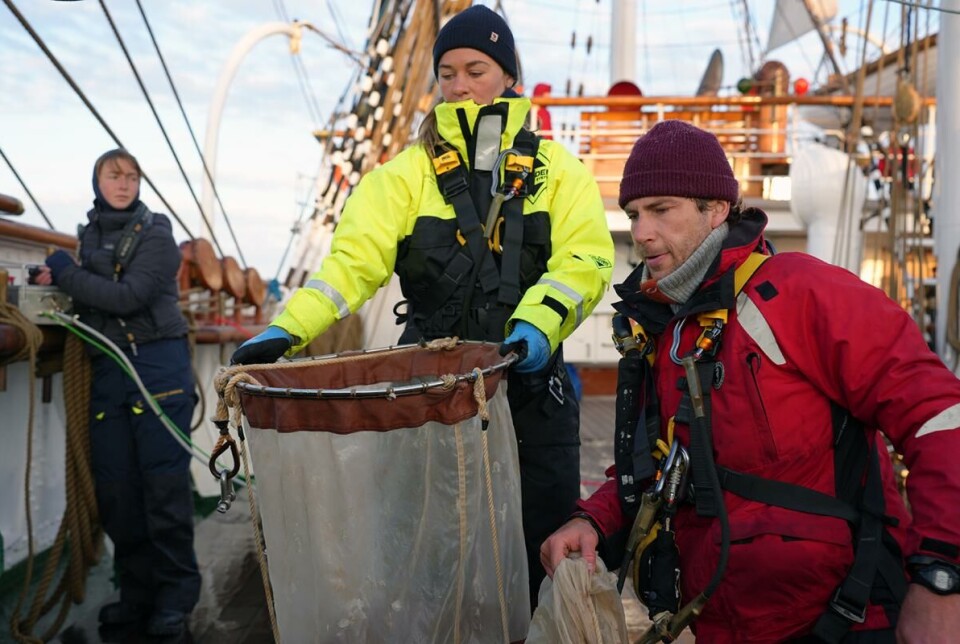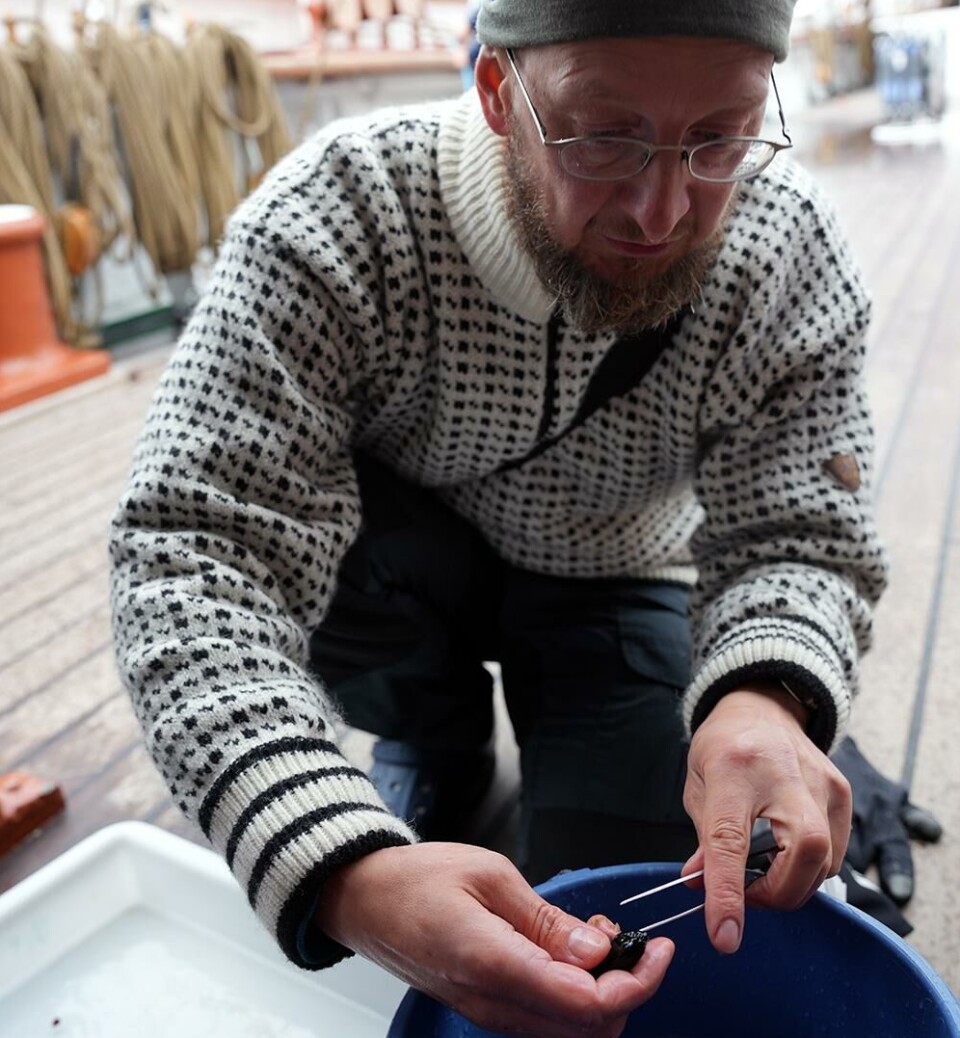THIS CONTENT IS BROUGHT TO YOU BY UiT The Arctic University of Norway - read more
Researchers reveal a fascinating catch from the depths of the sea
It was caught at a depth of up to 1,100 metres, offering a glimpse into one of the ocean's most mysterious ecosystems.

The fish was caught in a fine-mesh zooplankton net at 60 degrees north, between Greenland and Canada.
These fish live in the mesopelagic zone, a layer of the ocean typically found between 200 and 1,000 metres deep, where less than one per cent of sunlight penetrates.
“We were quite lucky. We probably caught it at the bottom of our cast, but there was 2,500 metres of water below us,” says Maxime Geoffroy, a researcher at UiT The Arctic University of Norway.

The Lanternfish and Its Unique Traits
Lanternfish can grow up to 30 centimetres long and is among the most abundant fish in the world. Geoffroy notes that while not every species is equally numerous, lanternfish as a group make up the largest global fish stock.
Despite their abundance, they are not densely clustered together but instead scattered throughout all the world's oceans.
“You can see them clearly on the echo sounder as part of the deep scattering layer, which is around 500-1,000 metres during the day, and closer to the surface at night,” he says.
The captured lanternfish has sparked excitement among the researchers and the students on board Statsraad Lehmkuhl.
“They're fascinating animals. You can see this line of little photophores that create a chemical reaction, producing bioluminescence,” explains Geoffroy.
He says it makes sense, as there is very little light in the twilight zone.
“We don’t know exactly what the bioluminescence is for – it could be for communication or a stress response,” he says.
Dislocates its jaw to swallow prey
The fish also has striking physical features.
“It has huge teeth, about half the size of its head, and could dismantle its jaw to swallow prey much larger than itself,” says Geoffroy.
In the dark depths, where visibility is limited, they need to be ready to grab and eat anything that comes close, even if it’s twice the size of their head, he explains.

A key role in the carbon cycle
The lanternfish plays a crucial role in the ocean’s biological carbon pump.
“These fish perform diel vertical migration, moving to the surface at night to feed and returning to the depths during the day. By doing so, they transport carbon from the surface to deeper water masses, where it can be sequestered for hundreds of years,” says Geoffroy.
This process starts with algae at the surface, which absorb carbon through photosynthesis.
“The lanternfish feed on animals that consume these algae, and when they migrate back to the depths, they release carbon through respiration, excretion, and other processes,” the researcher explains.
This makes them an important part of the ocean’s system for storing carbon.
Challenges in the Arctic
Traditionally, it was believed that mesopelagic fish, including lanternfish, were absent from the Arctic due to the region's unique light conditions, such as the midnight sun.
“They're photophobic, meaning they avoid light. If there’s constant light at the surface, they can’t migrate up to feed,” says Geoffroy.
This assumption, however, is being challenged. With the help of echo sounders, researchers have observed layers of fish that migrate vertically in the Arctic as well.
“This suggests that mesopelagic fish and other organisms might be present there after all. Which species they are, remains to be seen,” he says.

This content is paid for and presented by UiT The Arctic University of Norway
This content is created by UiT's communication staff, who use this platform to communicate science and share results from research with the public. UiT The Arctic University of Norway is one of more than 80 owners of ScienceNorway.no. Read more here.
More content from UiT:
-
AI can help detect heart diseases more quickly
-
Why does Norway need its own AI law?
-
How can we protect newborn babies from dangerous germs?
-
This is how AI can contribute to faster treatment of lung cancer
-
Newly identified bacterium named after the Northern Lights is resistant to antibiotics
-
International women's day:Why AI performs worse for women





































